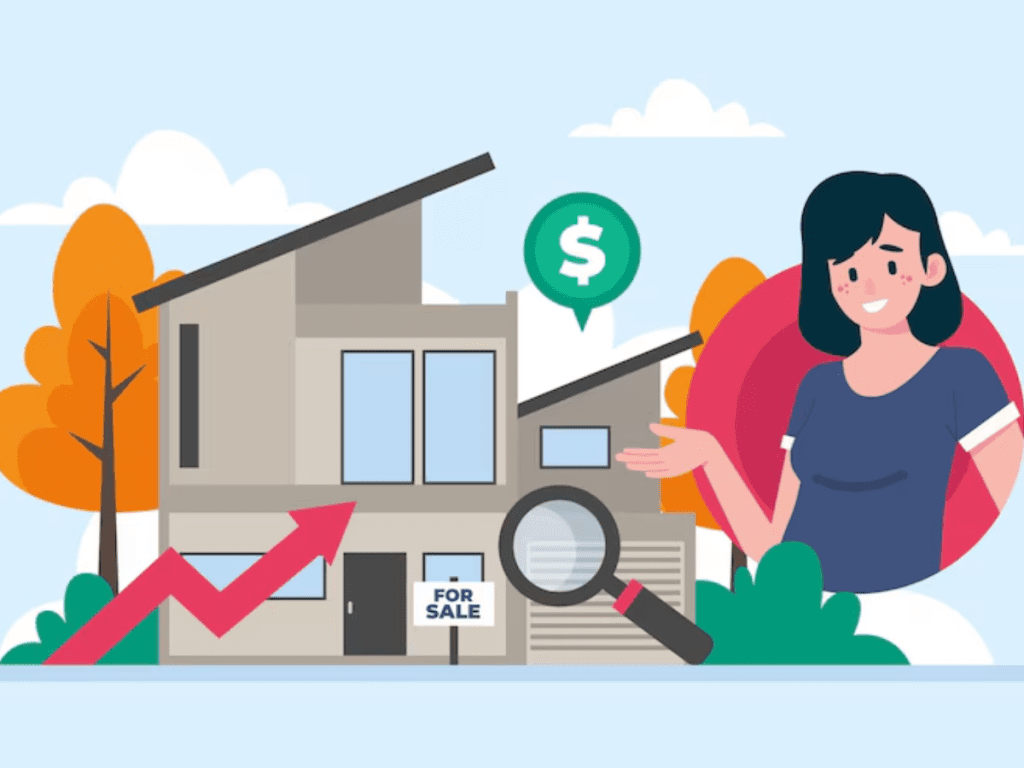Introduction
Purchasing a home is generally thought of as a milestone or a major accomplishment and is something that many individuals dream about their whole lives. For those who do not qualify for traditional loans, however, the dream becomes something that seems far off or even possible. Traditional loans, often provided by independent lenders, have stringent qualification terms that may prove challenging for others to qualify. Traditional loans tend to require a high credit score, a considerable down payment, and a steady income to confirm that the borrower can afford to repay the loan in the long term. For most people, these requirements can appear to be unattainable, particularly if they possess lower credit ratings, less savings, or unorthodox financial circumstances. Fortunately, there are a number of government-backed loan programs, including FHA, VA, and USDA loans, and alternative lending opportunities, that make it possible for people in this category to purchase a home. These alternatives have more flexible terms and allow opportunities for homeownership without the qualifications required for traditional loans.
Understanding Conventional Loans and Their Requirements
Prior to investigating the many alternatives, it is necessary to know the usual requirements of conventional loans since these are usually the norm that most individuals attempt to achieve when they are looking into homeownership. Conventional loans are not backed or insured by the government and therefore the lender takes on extra risk when disbursing them. To lessen this risk, lenders have stricter requirements to see that the lender can repay the loan. Part of the more important considerations in the assessment process of borrowers in obtaining conventional loans is their credit score. Most lenders will ask for a credit score of 620 or higher for borrowers to qualify for approval, but the better the credit score, the greater the likelihood of approval and a better interest rate. Borrowers with a credit score of 700 or higher tend to qualify more easily for loans with lower interest rates.
Another major requirement for conventional loans is the down payment. Lenders typically expect a down payment of 5% to 20% of the cost of the home, depending on the terms of the loan and the financial condition of the borrower. Although some borrowers are able to come up with enough money for a 20% down payment, many view this as one of the most significant deterrents to homeownership. Besides paying the down payment, lenders also check the debt-to-income ratio (DTI) of a borrower. The DTI ratio is the amount of a borrower’s income that is utilized to pay debts, and most lenders require a DTI ratio of 36% or less. This keeps borrowers within their means to pay their current debt and still be able to make mortgage payments.
Traditional loans also usually call for an appraisal of the property to make sure that it is worth the loan. This protects both the lender and the borrower because it makes sure that the value of the home is in proportion to the mortgage. These requirements can be daunting for many, particularly lower-credit scores or less-savvy savers, but government-sponsored loans and other lending institutions provide an accessible alternative for those who can’t quite make these traditional cut.
FHA Loans: A Government-Sponsored Alternative to First-Time Homebuyers
The Federal Housing Administration (FHA) loan program was developed to assist first-time homebuyers and those who can potentially struggle to qualify for conventional loans. FHA loans are intended to provide homeownership for those who have not had a spotless credit history or a large down payment. Perhaps the greatest benefit of FHA loans is their minimal down payment requirement. Borrowers can obtain an FHA loan with a down payment as low as 3.5%, which is much lower than the down payment for conventional loans, which typically begin at 5% and can reach as high as 20%. This reduced down payment requirement can help make it simpler for people to save for a home purchase and enter the housing market.
Aside from the minimum down payment, FHA loans are also lenient regarding credit scores. While conventional loans need at least a 620 credit score, FHA loans will be given to borrowers with a score of as low as 500, though a higher credit score would be preferable for obtaining more favorable terms. This makes FHA loans a viable choice for individuals who have perhaps experienced financial problems in the past and are trying to re-establish their credit. Also, FHA loans have competitive interest rates as they are government-insured. The insurance lowers the risk for the lender so that they can provide more favorable rates to borrowers.
One of the compromises with FHA loans is the need for mortgage insurance premiums (MIP). The premiums serve to protect the lender in the event that the borrower defaults on the loan. The MIP must be paid for the duration of the loan if the down payment made by the borrower is less than 10%. This is an important factor to consider when selecting an FHA loan, as it adds to the mortgage’s total expense. Although the increase in mortgage insurance contributes to the higher expense of the mortgage, the advantage of a low down payment and more relaxed credit score requirements typically balances out the disadvantage, making FHA loans a good option for many potential homeowners.
VA Loans: Special Benefits for Military Veterans and Active-Duty Personnel
For veterans, active-duty military, and surviving spouses who are eligible, a VA loan is a great choice for buying a home. VA loans are guaranteed by the U.S. Department of Veterans Affairs (VA), and they have several benefits that make them a popular choice over traditional loans. One of the greatest advantages of VA loans is that they generally do not involve a down payment, which is a huge benefit for service members and veterans who might not have the money set aside for a conventional down payment. This no-down-payment aspect makes VA loans one of the most cost-effective options out there for qualified borrowers.
Another significant advantage of VA loans is that they do not need private mortgage insurance (PMI), which conventional loans usually need if the borrower contributes less than 20%. PMI adds a considerable expense to the monthly mortgage, so the lack of this provision makes the VA loans even more economical to qualified borrowers. Additionally, VA loans will typically have lower interest rates than traditional loans, and this can contribute to making the overall mortgage cost less in the long term.
You have to satisfy specific service requirements if you wish to qualify for a VA loan, such as serving in the armed forces for some time. In certain instances, surviving spouses of veterans who have passed away during service or due to service-connected disabilities can also qualify for VA loans. Even though VA loans have numerous advantages, they do have a funding fee, which is a one-time fee that can be included in the loan. The size of the funding fee will depend on whether the borrower is a veteran and if this is their first use of a VA loan.
In spite of the funding charge, VA loans are still among the most economical and beneficial possibilities for active-duty military personnel and veterans. With no down payment, no PMI, and reduced interest rates, VA loans are a great option for those who qualify and want to purchase a home.
USDA Loans: A Rural Homeownership Opportunity
The United States Department of Agriculture (USDA) provides loans to families and individuals who are interested in buying homes in suburban and rural neighborhoods. These loans are aimed specifically at promoting homeownership in low-population areas and rural economic growth. Perhaps the biggest benefit of USDA loans is that they do not involve any down payment, which can really ease the economic load for potential homebuyers. This is especially helpful for those who might not be able to afford a conventional down payment but are willing to buy a home in a rural setting.
Along with the no-down-payment requirement, USDA loans generally provide competitive interest rates, which serves to make monthly mortgage payments more manageable over the duration of the loan. Borrowers must satisfy certain income and location requirements to be eligible for a USDA loan. Home income should be 115% of or less than the area median income for where the property resides. The house itself also has to reside within an eligible rural area, although this tends to mean that any area containing less than 35,000 individuals is generally in. Yet some exceptions are applied, and the suburbs might actually qualify in certain cases as well.
USDA loans do not have the private mortgage insurance (PMI) that can make conventional loans more expensive. In lieu of PMI, there is a small upfront guarantee fee and a yearly fee, both of which are lower than the cost of PMI in most cases. Although these fees may increase the overall cost of the loan, the lack of PMI and all the other benefits of USDA loans make them an excellent choice for many buyers.
Conclusion
Although traditional loans can be challenging to be approved for, particularly for individuals with poor credit or limited finances, there are a variety of alternative financing possibilities that can make homeownership more viable. FHA loans, VA loans, and USDA loans offer government-guaranteed backing that can ease the obstacles to homeownership, while other alternatives like subprime loans, hard money loans, peer-to-peer loans, and seller financing can add flexibility. It is crucial to thoroughly review your financial condition, know the terms of every loan, and select the one that best fits your requirements. With proper financing, home ownership is achievable, even for individuals who might not qualify for traditional loans.

